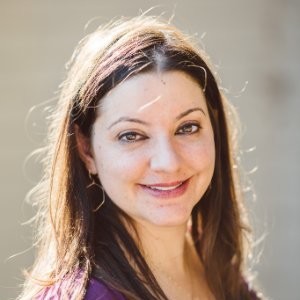
How much waste do you throw away every day? That’s the question the Glad Products Co. hopes people will ask themselves after viewing its new "Waste in Focus" photo series that peeked inside the trash, recycling and compost bins of eight families in four cities across the United States for one week.
Glad commissioned photojournalist Peter Menzel and writer Faith D’Aluisio to meet with, collect data from and photograph eight families who live in San Francisco, Atlanta, Phoenix and New York City. The participating families – each with four members – were asked to save a week’s worth of their household garbage and recycling, but were told not to change their daily behavior just for the study.
After a week, the husband-and-wife writing and photography team, who agreed to carry out the project on the condition of total independence from Glad, sorted, weighed, cleaned and recorded the waste. Then they took a portrait of each family with its discards; recycled and composted items were placed on the left side of the photo, and trash headed to landfill was positioned on the right. Each photo in the series is presented with the family’s back story, as well as data about the waste the family produced: the amount of trash, recyclables and compostables by weight and percentage of the total waste generated.
While it can be challenging to think of a company that makes trash bags as invested in waste reduction and sustainability, recyclers and environmental advocates should get behind Glad’s “Waste in Focus” project for trying to initiate a national conversation about everyday waste management practices. Waste is a particularly difficult environmental problem for individuals to wrap their heads around: We toss apple cores, empty soda bottles and junk mail in carts that we roll to the curb every week, and we never see them again.
Landfills are tucked away far from public view, so how can Americans possibly comprehend the Environmental Protection Agency’s statistic that we each throw away 4.38 pounds of garbage per person per day – a staggering total of 251 million tons a year? But much like artist Chris Jordan’s beautiful pieces that help us visualize overwhelming national consumption and disposal data, Glad’s photo series allows us to grasp the enormity of what we throw away on an individual basis.
Auditing a week’s worth of your own trash and recycling is an especially eye-opening way to discover how many natural resources you really consume and waste – and where you can improve. For example, one of the participating families, the Andersons in Phoenix, were surprised that about half of their total food waste was made up of extra edible, prepared food – not fruit peels, vegetable trimmings or bones. As a result of the study, Jana Anderson said she planned on making changes to her family’s meal planning to reduce the amount of surplus food they wasted – a decision that will also save her family money. Now imagine if other families were inspired by the “Waste in Focus” series and followed suit.
Glad’s project also draws attention to the role of city policies and programs in waste reduction, in addition to the individual consumer’s responsibility. The two families in San Francisco, which boasts comprehensive curbside recycling and organics collection programs, sent only 7 and 11 percent of their household’s waste to landfill, respectively, compared with the families in other cities who sent more than 50 percent of their waste to the dump.
Glad also set up a website, Wasteinfocus.com, to not only post the project’s photos and data, but also to provide everyday tips on waste reduction. The website includes pointers for sustainability newcomers – “In addition to newspaper, most communities accept corrugated cardboard and tissues boxes. Some even accept catalogues and phone books” – to advice on food storage that even a long-term recycler like me didn’t know – keep apples and tomatoes away from other fruits because they give off gases that accelerate spoilage.
Glad unveiled the “Waste in Focus” photo series on April 10 in New York City in a joint press conference with the New York City Department of Sanitation that announced the expansion of the city’s curbside composting program to include 100,000 more homes. In addition to being available online, the photos will be on display at New York’s Union Square on Earth Day.
Image credit: PRNewsFoto/The GLAD Products Company
Passionate about both writing and sustainability, Alexis Petru is freelance journalist based in the San Francisco Bay Area whose work has appeared on Earth911, Huffington Post and Patch.com. Prior to working as a writer, she coordinated environmental programs for Bay Area cities and counties. Connect with Alexis on Twitter at @alexispetru

Passionate about both writing and sustainability, Alexis Petru is freelance journalist and communications consultant based in the San Francisco Bay Area whose work has appeared on Earth911, Huffington Post and Patch.com. Prior to working as a writer, she coordinated environmental programs for various Bay Area cities and counties for seven years. She has a degree in cultural anthropology from UC Berkeley.














